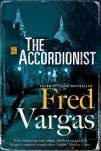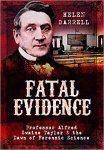I was hoping to publish this post in time for the 6th January, marking Epiphany by summarising four books I read over the holiday period. These are in addition to the Scandi novels which were the topic of my previous post. However life intervened so, a day late, here are some of my recommendations if you’re looking for a good read.
 The Birdwatcher was rightly acclaimed on its publication in 2016 and I’m sorry it took me so long to read it (the curse of the TBR pile). Sergeant William South is a birdwatcher and policeman who avoids murder cases. However, when a fellow bird enthusiast is killed, his attempts to assist in the investigation reveal murderous secrets in the Kent landscape. I loved the mix of strong setting and unusual plot. No-one is quite who they seem and South’s back story adds poignancy to the plot. It has an interesting ending (no spoilers) and the lead detective DS Alexandra Cupidi has her own series in Salt Lane coming this year. I also read this over Christmas and it’s a little early to review yet, but I promise you it’s a good one. For those who hadn’t read William Shaw before, he really is an excellent writer.
The Birdwatcher was rightly acclaimed on its publication in 2016 and I’m sorry it took me so long to read it (the curse of the TBR pile). Sergeant William South is a birdwatcher and policeman who avoids murder cases. However, when a fellow bird enthusiast is killed, his attempts to assist in the investigation reveal murderous secrets in the Kent landscape. I loved the mix of strong setting and unusual plot. No-one is quite who they seem and South’s back story adds poignancy to the plot. It has an interesting ending (no spoilers) and the lead detective DS Alexandra Cupidi has her own series in Salt Lane coming this year. I also read this over Christmas and it’s a little early to review yet, but I promise you it’s a good one. For those who hadn’t read William Shaw before, he really is an excellent writer.
 Readers of this blog will know that Fred Vargas is one of my favourite writers but I’ve been a little disappointed in her most recent books. The Accordionist features her three evangelist characters who play less of a role than in previous books in this series. At the centre is an accordionist, Clement, sought by police for a number of murders. Ex-special investigator, Louis Kehlweiler is asked to help prove Clement’s innocence but isn’t helped by the accused’s learning disabilities and dark secrets in his past. It was an easy story written in Vargas’s trademark style and full of Parisian menace.
Readers of this blog will know that Fred Vargas is one of my favourite writers but I’ve been a little disappointed in her most recent books. The Accordionist features her three evangelist characters who play less of a role than in previous books in this series. At the centre is an accordionist, Clement, sought by police for a number of murders. Ex-special investigator, Louis Kehlweiler is asked to help prove Clement’s innocence but isn’t helped by the accused’s learning disabilities and dark secrets in his past. It was an easy story written in Vargas’s trademark style and full of Parisian menace.
 Fatal Evidence is a biography of Professor Alfred Swaine Taylor, a surgeon and chemist at Guy’s Hospital who was a pioneer of forensic techniques in the nineteenth century. The book describes many of fascinating cases that Taylor investigated and the level of detail that Barrell gives us never threatens to overwhelm the portrayal of a complex individual. It’s a fascinating period. Poison was easily accessible and, until Taylor’s forensic work, its presence difficult to prove post-mortem. Poison is unfairly considered a woman’s weapon. As Fatal Evidence shows, all sections of society were using it: fathers, lovers, spouses, children, professionals. Barrell also describes the influence of Taylor on a succession of crime writers, from Dickens to Sayers. It’s fascinating read and, if you read one non-fiction book this year, Fatal Evidence should be it.
Fatal Evidence is a biography of Professor Alfred Swaine Taylor, a surgeon and chemist at Guy’s Hospital who was a pioneer of forensic techniques in the nineteenth century. The book describes many of fascinating cases that Taylor investigated and the level of detail that Barrell gives us never threatens to overwhelm the portrayal of a complex individual. It’s a fascinating period. Poison was easily accessible and, until Taylor’s forensic work, its presence difficult to prove post-mortem. Poison is unfairly considered a woman’s weapon. As Fatal Evidence shows, all sections of society were using it: fathers, lovers, spouses, children, professionals. Barrell also describes the influence of Taylor on a succession of crime writers, from Dickens to Sayers. It’s fascinating read and, if you read one non-fiction book this year, Fatal Evidence should be it.
That’s it. Happy new year agin to everyone and look out for some posts on more of my nordic noir reading and also books I’ve been devouring in advance of Granite Noir, Aberdeen’s festive of crime fiction coming in February,
Advertisements Share this:





